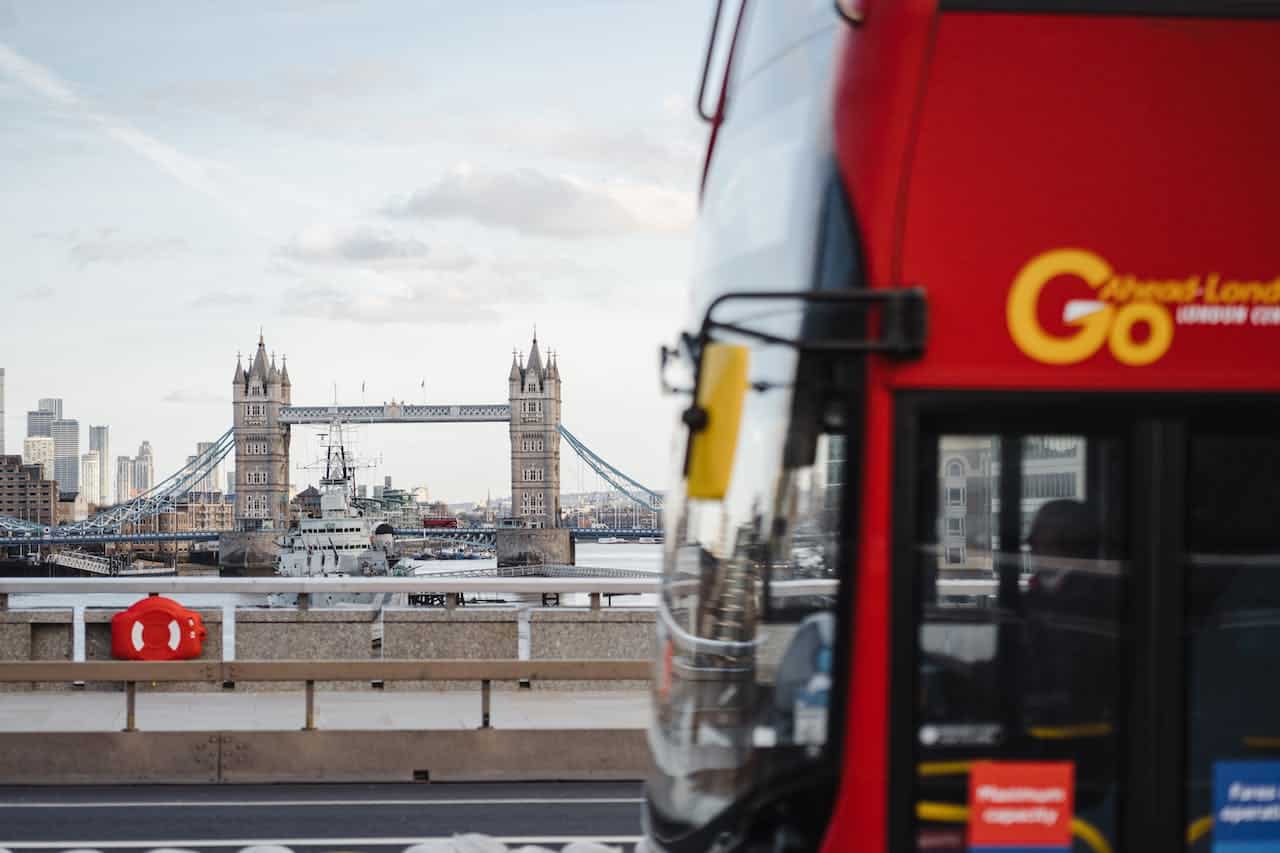The small bus transport business is an integral cog in the wheel of urban and interurban connectivity, often operating in the shadows of their larger counterparts but playing a pivotal role in daily commutes. These businesses typically serve niche markets, offering specialized transit options tailored to community needs or geographical peculiarities. The agility of small bus operations allows them to adapt routes and schedules to serve community events, corporate functions, or regular shuttle services for institutions. They act as crucial links for suburban and rural areas, connecting them to mainline transport services and providing a lifeline for communities that might otherwise be isolated.
In many cities and towns, small bus businesses bridge the gap between personal and public transport. They offer the flexibility and convenience of a private car with the cost-effectiveness and social interaction of public transport. Such services can range from school runs, which provide safe passage for children, to luxury coaches for tourists exploring off-the-beaten-track attractions. They can also include shuttle services for businesses or last-mile connectivity services for more extensive public transport networks.
Importance of a Business Plan
A robust business plan stands as a beacon that guides a small bus transport business through the tumultuous waters of the transport sector. It’s not merely a document, but a strategic blueprint that encompasses the mission, operational strategy, marketing plans, and financial forecasts of the business. Such a plan is critical not only for guiding the company internally but also for communicating its vision and potential to external stakeholders. It serves as a persuasive tool for attracting investors, securing loans, and forming partnerships.
The business plan is the narrative of the business, telling the story of where the company aims to go and how it plans to get there. It outlines the unique selling propositions of the services offered, the expertise of the management team, and the financial acumen that underpins the venture. By presenting a clear picture of the market analysis, strategy, and financial viability, the business plan acts as a compass for decision-making and a gauge for measuring progress against objectives.
Understanding the Transport Industry
Current market trends
Navigating the current market trends in the transport industry requires vigilance and adaptability. With a growing emphasis on sustainability, operators are increasingly investing in low-emission buses and exploring alternative fuels. Innovations in technology are offering small bus businesses tools to streamline their operations, from dynamic routing software to advanced booking and payment platforms. These trends not only reflect changing consumer expectations but also the industry’s response to broader societal shifts.
The industry is also facing a period of reconstruction post-pandemic, as patterns of work and travel have been irrevocably altered. Flexible and dynamic transport solutions that can respond to changing commuter volumes and patterns are becoming the new standard. Small bus businesses are uniquely positioned to capitalize on this shift, given their inherent flexibility and capability to offer personalized services.
Different types of small bus transport business models
The ecosystem of small bus transport is diverse, encompassing a range of business models each with its distinctive characteristics. Contract-based models can provide steady income, establishing recurring business with schools, businesses, or government services. Demand-responsive transport is gaining traction, offering users a flexible and efficient alternative to fixed-route services, especially in low-density areas where traditional services may not be viable. Fixed-route services cater to consistent demand along key corridors and can provide reliable income if managed efficiently.
Each model serves different customer segments and requires distinct operational strategies. A contract service model demands punctuality and reliability, while demand-responsive services require sophisticated dispatch and booking systems. Fixed-route services need careful planning and marketing to ensure high ridership and route profitability.
Knowledge about regional and national laws, regulations, and permits
In the transport sector, compliance with laws and regulations is non-negotiable. It is imperative for small bus businesses to be well-versed in the regulatory environment, which includes obtaining the necessary permits, adhering to safety regulations, and meeting vehicle and driver standards. These laws ensure the safety of passengers and the general public, and they can vary greatly from one region to another.
Understanding these regulations is also crucial for planning the business model and operations. It affects everything from bus purchase decisions to hiring practices and route planning. Failure to comply can result in fines, legal action, or even the revocation of the right to operate, underscoring the importance of this knowledge in the foundational stages of business planning.

How to Start a Small Bus Transport Business:
Business Plan Creation
In conceptualizing your business idea, it’s essential to identify the unique value proposition your small bus transport business will offer. This could mean identifying underserved routes, providing premium comfort in daily commutes, or creating bespoke services for tourists. The idea should stem from a clear understanding of potential customers’ pain points and seek to address them with innovative transport solutions.
A well-defined business concept not only clarifies the operational focus but also helps in branding and marketing efforts. It sets the foundation for all future strategies and decisions, anchoring the business in a clear purpose and direction. Whether it’s providing cost-effective daily transport for workers or luxurious coaches for tourists, the idea must resonate with the target market and meet specific needs.
Becoming familiar with the competition
In any business, knowledge of the competition is crucial, and in the small bus transport sector, it is doubly so. Understanding who your competitors are, their strengths and weaknesses, their market share, and their business models is vital. This intelligence informs your strategic decisions, from pricing to route planning, and can identify gaps in the market that your business could exploit.
A thorough analysis of competitors can reveal opportunities for differentiation. Perhaps there’s a gap in the quality of customer service offered or a potential for higher-end services that have not been tapped into. Knowledge of the competitive landscape helps in positioning your service in a way that appeals to customers looking for something that current options don’t provide.
Market research and target audience
Conducting thorough market research is critical in painting a detailed picture of the potential customer base. It allows you to understand the demographics, preferences, and behaviors of the population you intend to serve. This information is the cornerstone of developing effective marketing strategies and crafting services that resonate with your intended audience.
Identifying the target audience is not just about understanding who they are, but also where they need to go, their expectations for service, and their willingness to pay. This insight will inform everything from the frequency and timing of services to the choice of vehicles and onboard amenities. Market research ultimately ensures that the services provided align with what the market needs and wants, thus maximizing the potential for business success.
Pricing strategy and income projection
Developing a pricing strategy is a delicate balancing act that requires careful consideration of cost structures, competitive pricing, and perceived value. The goal is to find a sweet spot where prices are attractive enough to lure passengers away from other modes of transport, yet high enough to cover costs and deliver a profit. It’s a core aspect of the business model that affects demand, revenue, and overall financial health.
Income projections, based on the pricing strategy, are a vital part of the business plan. They are used to forecast future financial performance and are critical in securing funding from investors or lenders. These projections must be grounded in realistic assumptions about ridership, operational costs, and market growth. They provide a financial framework within which the business must operate, setting targets for revenue and identifying the path to profitability.
Building Your Own Fleet
- Choosing the right type of buses: Building an efficient and effective fleet starts with choosing the right type of buses. Key factors to consider include fuel efficiency, which impacts long-term operational costs, and seating capacity, which should align with your anticipated passenger volume. Maintenance costs are another crucial factor; lower maintenance needs can significantly reduce operating expenses over time. The type of service planned also dictates the choice of buses. For instance, city transit services may require different features compared to long-distance travel buses. You’ll need to balance budget constraints with these operational considerations to select the most appropriate buses for your service.
- Proper vehicle maintenance: Regular and systematic vehicle maintenance is non-negotiable in the transportation industry. Investing in preventive maintenance can significantly reduce the likelihood of costly repairs and unexpected breakdowns. Consistent maintenance ensures the buses remain in top condition, extending their useful life and guaranteeing the safety and comfort of passengers. A well-maintained fleet also reflects positively on your business’s reputation for reliability and safety.
- Acquisition of necessary equipment: Equipping your buses with necessary safety features is both a legal requirement and a moral imperative. This includes fitting each bus with fire extinguishers, visible and functional emergency exit signs, and comprehensive first aid kits. Beyond safety equipment, consider the comfort of your passengers, especially for longer journeys. Features like air conditioning, entertainment systems, and Wi-Fi can significantly enhance passenger experience. The choice of these additional features often depends on your customer demographic and the nature of your service.
Designing Operational Procedure
- Hiring and training staff: The efficiency and quality of your service heavily depend on your staff. Hiring competent employees and investing in their continuous training are crucial. Regular training ensures that your team stays up-to-date with the latest industry regulations, safety protocols, and technological advancements. It also plays a vital role in boosting employee morale and job satisfaction, which in turn can improve the quality of service provided to passengers.
- Creating a schedule and routes: Effective route planning and scheduling are the backbones of a successful transport business. Developing optimized routes and schedules requires a deep understanding of your target market, including the peak travel times and preferred destinations of your passengers. Efficient scheduling ensures that your service is both convenient for users and cost-effective for your business.
- Preparation for special needs passengers: Inclusivity is key in public transport services. It’s essential to make provisions for passengers with special needs. This includes ensuring wheelchair accessibility, incorporating braille signs for the visually impaired, and providing dedicated seating areas. Catering to special needs passengers not only broadens your potential customer base but also demonstrates a commitment to community service and accessibility.

Marketing and Advertising Your Business
- Branding your business: Creating a strong and recognizable brand is vital in setting your transport service apart from competitors. A good brand reflects your business’s values, promises, and identity. It should resonate with your target audience and create a lasting impression. Investing in a professional logo, distinctive bus designs, and consistent branding across all touchpoints can significantly enhance brand recognition.
- Developing a marketing strategy: An effective marketing strategy combines multiple channels to reach and engage with your target audience. This could include traditional marketing methods like print and broadcast media, as well as digital marketing. Tailor your marketing efforts to align with the preferences and behaviors of your target market. Analyzing market trends and customer feedback can help refine your strategy for maximum impact.
- Using social media and other online platforms for advertising: In today’s digital age, social media and online platforms are crucial for reaching out to customers. These platforms offer a cost-effective way to increase visibility, interact with passengers, and build a community around your brand. Leveraging social media for targeted advertising campaigns, engaging content, and customer service can drive significant growth and brand loyalty. In addition, having an intuitive and informative website can further enhance your online presence, providing a platform for customers to access information, book tickets, and provide feedback.
Ensuring Financial Stability and Growth
Financial stability is the bedrock on which successful businesses are built. Especially in the transport sector, where margins can often be thin, and competition is stiff, ensuring that you manage your resources optimally is crucial.
Managing your operating costs
One of the primary avenues to ensure profitability is to keep a tight leash on operating costs. Every penny saved on unnecessary expenses directly contributes to your bottom line. A diligent and consistent evaluation of operational expenditures can help identify inefficiencies or areas where costs can be trimmed without affecting performance. For instance, renegotiating vendor contracts, exploring fuel-efficient routes, or investing in preventive maintenance to reduce breakdowns can lead to significant savings in the long run.
Expanding your services
In a dynamic marketplace, businesses that adapt and expand often fare better than those that remain static. Diversifying the services your fleet provides not only taps into new customer segments but can also hedge against downturns in any single service area. This might involve moving into specialized transportation sectors, adding value-added services like logistics management, or tapping into emerging markets. As you diversify, it’s essential to ensure that the quality of service remains consistent, as this will be vital in building and retaining a loyal customer base.
Investment opportunities and financial management
To secure a future of sustained growth, a transport business must do more than just manage its day-to-day finances. A forward-looking financial strategy involves recognizing and seizing investment opportunities. This could mean expanding the fleet, exploring technological upgrades, or even acquisitions and mergers. Having a clear understanding of the transport business cycle, along with an agile approach to financial management, can provide the liquidity and flexibility needed to capitalize on these opportunities when they arise.
Handling Possible Challenges and Risks
The transport business, while lucrative, comes with its fair share of challenges. Being forearmed with knowledge and strategies can be the difference between weathering these challenges and being overwhelmed by them.
Dealing with insurance
The potential for damages and accidents makes insurance a non-negotiable aspect of the transport business. While third-party insurance is mandatory, it’s often prudent to consider comprehensive insurance. This can cover damages to your own vehicles, theft, or even loss of income due to disruptions. Periodically reviewing and updating your insurance cover, based on the evolving needs and risks of your business, ensures you remain adequately protected without paying for unnecessary coverage.
Addressing common possible pitfalls
The road to success in the transport industry is not without its bumps. Fluctuating fuel prices can erode profitability. Mechanical breakdowns can lead to service disruptions, unhappy clients, and potential loss of business. Accidents, besides being potential financial drains, can also harm the company’s reputation. And then there are the ever-present regulatory changes, which can necessitate expensive compliance measures. Being vigilant, staying updated on industry trends, and investing in training and maintenance can mitigate many of these risks.
Contingency planning
Every seasoned business owner knows that despite the best precautions, unforeseen disruptions can and will occur. It’s not enough to hope for the best; one must also plan for the worst. This involves identifying potential threats to your business and having a blueprint to navigate them. Whether it’s a sudden spike in fuel prices, loss of a major client, or even global events like economic downturns, a robust contingency plan ensures that the business remains resilient. This involves financial provisions, backup vendors, alternate routes, and even crisis communication strategies to keep stakeholders informed. Preparedness is, after all, half the battle won.
